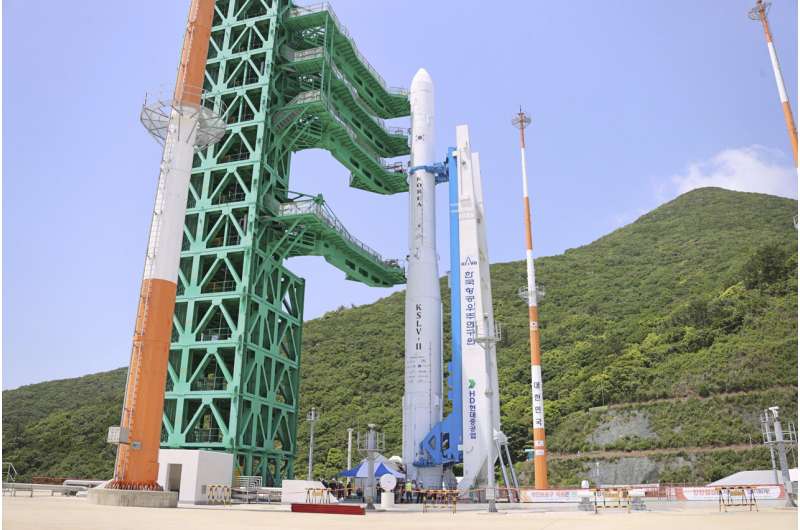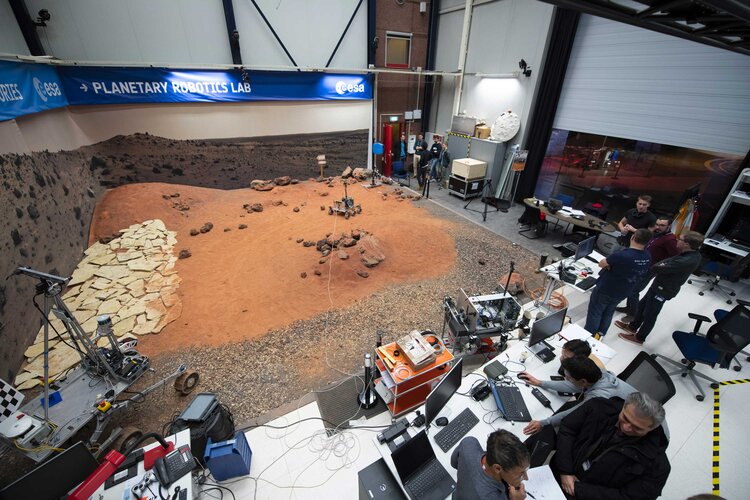Planet announces AI Partnerships at GEOINT 2023
Wednesday, 24 May 2023 10:02 Planet Labs PBC (NYSE: PL), a leading provider of daily data and insights about Earth, has announced new strategic partnerships with artificial intelligence (AI) analytics providers at the U.S. Geospatial Intelligence Foundation's 2023 GEOINT Symposium. These companies' AI-powered analytics enable object detection and classification services on top of Planet's high-frequency, medium- and high-re
Planet Labs PBC (NYSE: PL), a leading provider of daily data and insights about Earth, has announced new strategic partnerships with artificial intelligence (AI) analytics providers at the U.S. Geospatial Intelligence Foundation's 2023 GEOINT Symposium. These companies' AI-powered analytics enable object detection and classification services on top of Planet's high-frequency, medium- and high-re Mars rover Zhurong finds evidence of water at red planet's low latitudes
Wednesday, 24 May 2023 10:02 China's Mars rover Zhurong has provided key observational evidence of liquid water at low Martian latitudes, the warmest regions on the red planet, according to a new study published in the journal Science Advances this week.
Previous studies found evidence of a large amount of liquid water on early Mars, but dramatic climate changes led to very low pressure and water vapor content, making
China's Mars rover Zhurong has provided key observational evidence of liquid water at low Martian latitudes, the warmest regions on the red planet, according to a new study published in the journal Science Advances this week.
Previous studies found evidence of a large amount of liquid water on early Mars, but dramatic climate changes led to very low pressure and water vapor content, making MAHLI works the night shift: Sols 3837-3838
Wednesday, 24 May 2023 10:02 Earth planning date: Monday, May 22, 2023- Curiosity successfully wrapped up the "Ubajara" drill campaign over the weekend with some imaging of the drill tailings. This Monday, we are planning two sols (Mars days) of activities to finish up at Ubajara before driving off in the coming sols. Most targeted science today is focused on bedrock target "Apetina," which is situated on the same block as
Earth planning date: Monday, May 22, 2023- Curiosity successfully wrapped up the "Ubajara" drill campaign over the weekend with some imaging of the drill tailings. This Monday, we are planning two sols (Mars days) of activities to finish up at Ubajara before driving off in the coming sols. Most targeted science today is focused on bedrock target "Apetina," which is situated on the same block as Light shining through a wall experiment searches for dark matter
Wednesday, 24 May 2023 10:02 An international research team is employing an innovative approach to detect elusive, extremely light new elementary particles, known as axions or axion-like particles, using the Any Light Particle Search (ALPS) experiment. This groundbreaking experiment leverages twenty-four repurposed superconducting magnets from the HERA accelerator, intense laser beams, precision interferometry, and highly s
An international research team is employing an innovative approach to detect elusive, extremely light new elementary particles, known as axions or axion-like particles, using the Any Light Particle Search (ALPS) experiment. This groundbreaking experiment leverages twenty-four repurposed superconducting magnets from the HERA accelerator, intense laser beams, precision interferometry, and highly s Homeland security an untapped market for satellite imagery and analytics
Wednesday, 24 May 2023 09:19
Commercial imaging satellites and change detection analysis have emerged as powerful tools increasingly employed by national security agencies.
ESA plays alien in art project pondering life beyond Earth
Wednesday, 24 May 2023 07:30
Research Fellows in space science 2023
Wednesday, 24 May 2023 07:00 Image:
Image:
ESA has selected 12 new Fellows to pursue their own independent research in space science in 2023 The Research Fellowships in Space Science represent one of the highlights of the ESA Science programme. Early career postdoctoral scientists are offered the unique opportunity to carry out advanced research related to the space science areas covered by ESA Science missions at one of three ESA establishments (ESAC, ESTEC or STScI) for a period of up to three years.
The 2023 Research Fellows in Space Science are Ashley Chrimes, Guillaume Cruz-Mermy, Marjorie Decleir, Camille Diez, Henrik Eklund, Elena Favaro, Thibaud Moutard , Isabel
Satellite Vu raised $15.8 million for thermal satellite constellation
Wednesday, 24 May 2023 07:00
British Earth observation startup Satellite Vu raised 12.7 million British pounds ($15.8 million) for its thermal satellite constellation.
The post Satellite Vu raised $15.8 million for thermal satellite constellation appeared first on SpaceNews.
The ExoMars Trace Gas Orbiter team practises beaming a message back to Earth - using themselves
Wednesday, 24 May 2023 06:56 Image:
Image:
A mysterious signal is being sent by ESA’s ExoMars Trace Gas Orbiter on 24 May, a spacecraft orbiting the Red Planet looking for evidence of possible biological or geological activity.
As part of the global 'A Sign In Space' art project, it will strike huge antennas dotted around the globe; the Green Bank Telescope (West Virginia), the Medicina Radio Astronomical Station (Italy) and the Allen Telescope Array (California).
Early tests were conducted to ensure the feasibility of the endeavour and allow the ground-based observatories to fine tune their systems to be ready for the public event.
During preparations for sending
Satellites provide crucial insights into Arctic amplification
Wednesday, 24 May 2023 06:45
The Arctic, once again at the forefront of climate change, is experiencing disproportionately higher temperature increases compared to the rest of the planet, triggering a series of cascading effects known as Arctic amplification. As concerns continue to grow, satellites developed by ESA have become indispensable tools in understanding and addressing the complex dynamics at play and the far-reaching consequences for the environment and human societies.
South Korea to conduct satellite launch as North Korea pushes to fire its 1st military spy satellite
Wednesday, 24 May 2023 06:25
South Korea was set to launch its first commercial-grade satellite Wednesday as rival North Korea pushed plans forward to place its first military spy satellite into orbit.
NGA plans new procurement of commercial Earth monitoring services
Tuesday, 23 May 2023 19:02
The National Geospatial-Intelligence Agency is planning a new procurement of commercial services to monitor activities from space.
Three companies to buy most Virgin Orbit assets
Tuesday, 23 May 2023 18:54
Three aerospace companies submitted winning bids at a bankruptcy auction for most of the assets of launch company Virgin Orbit, ending any chance that company could return to flight under new ownership.
NRO seeks closer ties with industry
Tuesday, 23 May 2023 17:06
U.S. defense and intelligence agencies need to forge even closer ties with the commercial sector to address global security threats, said Chris Scolese, National Reconnaissance Office director.


 Image:
Mars corner
Image:
Mars corner